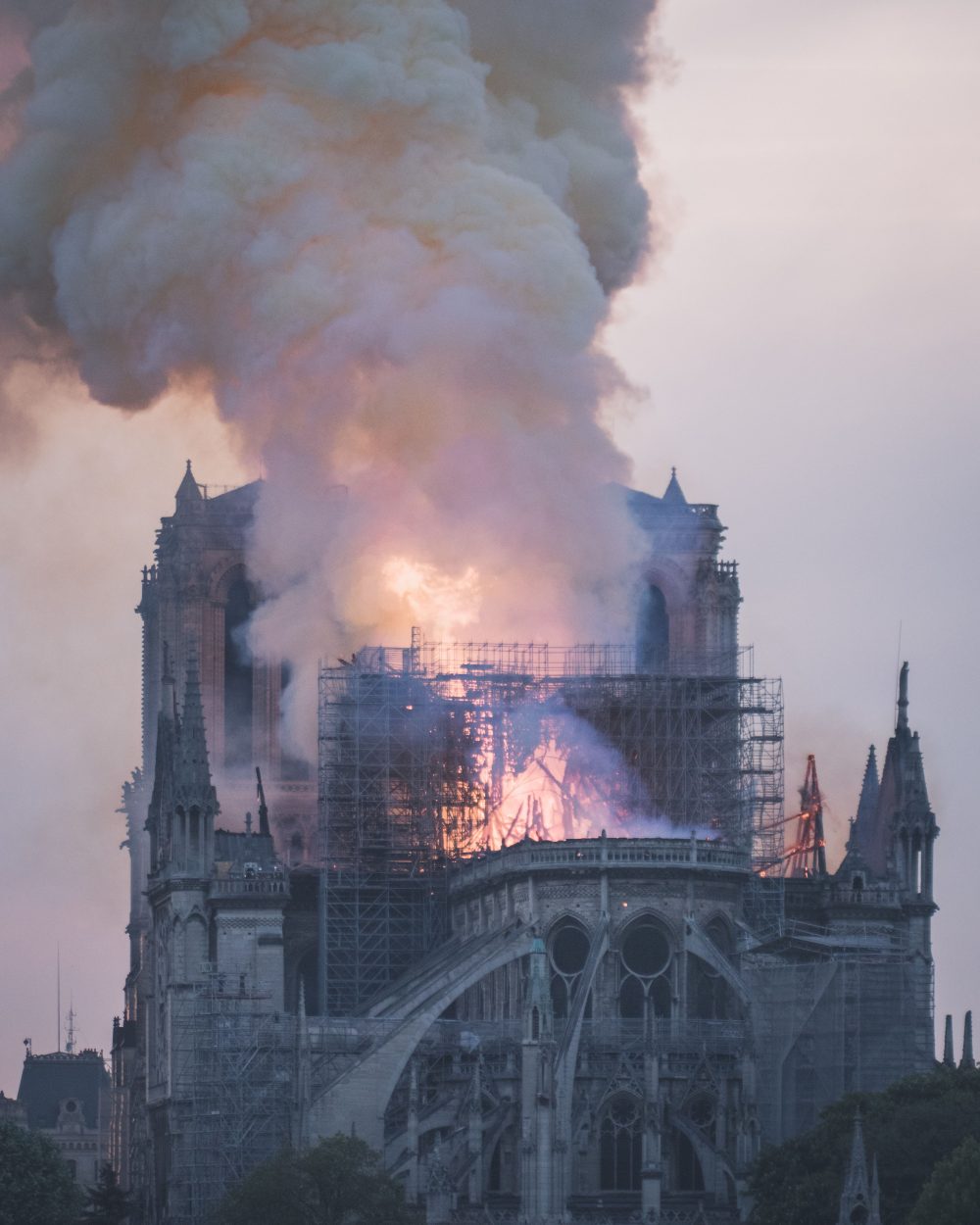
In this Q&A with architect Farnaz Mansuri, we investigate the meaning of the April 15 burning of Notre Dame Cathedral. As a member of the Baha’i Faith, Mansuri points to a global solution — create a global restoration program to repair and preserve our cultural heritages and natural resources.
How can this spiritual space rise from the ashes yet again?
For many citizens of the world, Notre Dame was and still is a beloved spiritual space. I worry that the fastest burning spiritual space is our planet — the real spiritual breakdown is that we’re burning through our resources. The denial over whether it’s really happening or what is causing it masks this crisis, much bigger than Notre Dame or the lost valuables in Syria, which is a conversation piece in the architecture community and for the world at large, but could instead be the conversation opener.
Top administrative cleric Patrick Chauvet asked “Why?” as he watched the fire. What other deeper meanings do you find?
As a Baha’i, I see this as a time to talk about unity because we are one people from one planet. Our cultures and traditions are like fruits and flowers from different parts of the world and its preservation is of utmost importance.
Pope Francis calls the Cathedral an “architectural gem of a collective memory.” How can the restoration bring people together?
Tourism shows Notre Dame is an icon that belongs to everyone. Notre Dame has needed renovation for quite some time and the resources have not been there. It took a tragic situation before the donors would write checks.
Inspired by this project, a global restoration program could analyze and fund many fragile buildings. On the committee would be a representative from each country to voice particular interests of their nation as well as experts in finance, international law and historic preservation. Let’s not wait for another tragedy.
Funds are pouring in for Notre Dame. What does this amount of aid and attention symbolize?
This is a phenomenal sign of hope. We need to take the goodwill of all the wealthy and willing and put it into a solution that attempts to work through all problems at hand. For people with the means to put their money back into the public sector at this level is rare. In the past, royalty sponsored cultural landmarks and the arts. They’d invest in our cities, churches, government buildings, restoring culture and funding the arts.
Often today, the wealthy are not seeing themselves as responsible to build cities and cultural places. Some buy art and keep it behind closed doors and are not obliged to go into the public sector. Look at civic structures in the United States. Here, public projects go to the lowest bidder because they don’t want to waste taxpayer money; however low-quality buildings require high maintenance and in the end, they do waste taxpayer money and provide no cultural value. We need a solution to this self-perpetuating cycle of waste — to defy the spiritual breakdown of our world, we need global awareness.
When the world looks back on this in 50 years, what perspective might be gained?
My hope is that Notre Dame’s restoration will have inspired the world to come together. For some, it is a symbol of spiritual awakening; for others, it motivates political change. Whether you value the cathedral as a church or as a museum, it holds the power to transform our relationships across borders.
